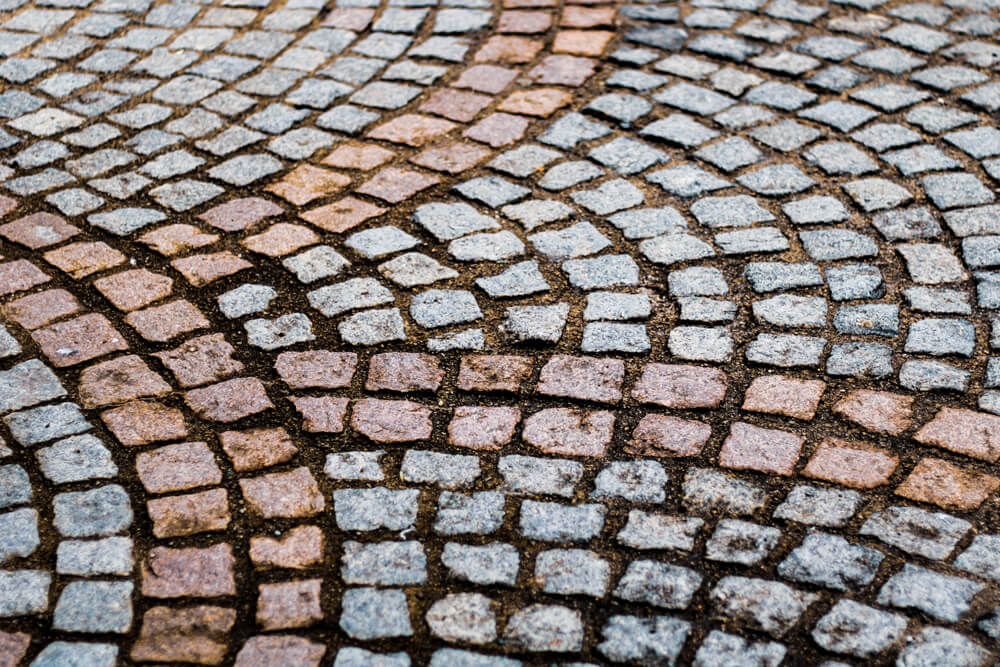What Kinds of Filler Should You Use In Between Your Pavers?

Stepping stones can be found in many different homes, gardens, and commercial areas around your city or town. More commonly referred to as pavers, these tiles are often made of poured concrete or natural stone. They are used to create walkways, driveways, terraces, and other structures around your home or business.
The materials used to make pavers vary, allowing for foundational and beautification effects fit for architectural builds and landscaping. You can choose from terracotta pavers, porcelain pavers, sandstone pavers, and many other types of tiles for your outdoor spaces.
Pavers not only play a role in improving your home’s aesthetics and curb appeal. They also serve as a practical surface, leveling sidewalk areas and driveways in place of pavement or gravel.
Picking the Right Filler for Your Pavers
The most commonly used joint material for pavers is sand. You can use different types of sand to stabilize the pavers and prevent insects and weeds from ruining your outdoor flooring.
Here are the main choices you have and what makes some better than the others.
- Polymeric sand: this might be the best choice of joint material for pavers, even if it costs more than the other variants. Polymeric sand contains 80-90% quartz and silica, making it a strong binder less prone to weathering or wear.
- Coarse, granular sand: this is the second-best choice is coarser, irregular sand that keeps the pavers together and locks them in place.
- Regular sand: although this is the least recommended option, regular sand can still be used for binding pavers under certain conditions.
Another additive to consider is a sealant. Your pavers will last much longer and look great if you apply this after installation or in combination with sand. The mixture gets into the sand between pavers, creating a mortar that hardens, sealing the tiles.
What Not to Use Between Your Pavers
When starting an outdoor path or walkway project, it makes sense to focus on the type and quality of the pavers you choose. But the same amount of attention should be paid to the binding material, including what you should not use between your pavers.
Mortar might seem like a good choice at first sight, but it is a bad idea for holding pavers together as it does not provide the flexible seal that sand does. Mortar is also prone to cracking and shifting, which means it is only a matter of time before it gets damaged.
Fine sand should also be avoided for this purpose because its grains don’t lock together. As a result, fine sand will wash away with rain, making the pavers wobbly and separate from each other.
Fulton Brickyard – Your Partner in Paving
Pavers make for a unique addition to any landscape project. Remember to use a high-quality combination of pavers and joint material to achieve a durable and great-looking surface for your outdoor area.
For the best results, consult the paver professionals of Fulton Brickyard to guarantee you a smooth, strong, and long-lasting landscaping project.
- A Guide to Growing Your Own Edible Garden at Home
- Sustainable Landscaping Habits for Eco-Friendly Homeowners
- The Importance of Sealing Your Pavers for Long Term Protection
- Why Your Paver Patio is Sinking and How to Prevent It
- Terracotta Pavers vs Brick Pavers: Which One is Right for You?
- Should You Do It Yourself or Hire a Professional Landscaper for Your Yard?
- Are Sandstone Paver Walkways Safe for Pets and Children?
To learn more about the outstanding benefits of our expressive, evocative,
and natural granite pavers call us today on:
